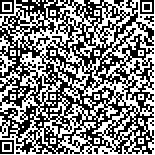| 引用本文: |
李武,艾坤,蒋全睿,刘小卫,唐锦忠,曾莉华,李江山.负重离心收缩诱导人体肱二头肌延迟性肌肉酸痛模型的实验研究[J].湖南中医药大学学报,2018,38(3):330-334[点击复制] |
|
| |
|
|
| 本文已被:浏览 3015次 下载 1070次 |
| 负重离心收缩诱导人体肱二头肌延迟性肌肉酸痛模型的实验研究 |
| 李武,艾坤,蒋全睿,刘小卫,唐锦忠,曾莉华,李江山 |
| (湖南中医药大学, 湖南 长沙 410208;湖南中医药大学第一附属医院针灸推拿康复科, 湖南 长沙 410007;郴州市第一人民医院康复科, 湖南 郴州 423000) |
| 摘要: |
| 目的 观察利用负重状态下离心收缩的方式是否诱导人体肱二头肌延迟性肌肉酸痛症(DOMS)模型。方法 实验对象从在校大学生中招募志愿者60名,随机分为造模组和对照组,两组各30例;造模组做负重状态下离心收缩运动两组,每组25个,每个动作操作时间20秒,对照组不做任何处理,通过观察志愿者的血清磷酸肌酸激酶(CK)、主观酸痛阈、主观体力等级评定量表(RPE)、DOMS临床评价(CEC)等级来评价模型是否成功。结果 造模组与对照组比较,试验后24 h和48 h主观酸痛阈低于对照组,试验后72 h CK高于对照组,试验后即刻、24 h、48 h、72 h RPE明显高于对照组,试验后即刻、24 h、48 h、72 h、120 h CEC高于对照组,差异均有统计学意义(P<0.05)。造模组试验后与试验前比较,试验后24 h、48 h和72 h主观酸痛阈明显低于试验前,试验后48 h、72 h和120 h CK高于试验前,试验后即刻、24 h、48 h、72 h RPE明显高于试验前,试验后即刻、24 h、48 h、72 h、120 h CEC高于试验前,差异均有统计学意义(P<0.05)。结论 负重状态下离心收缩可以诱导肱二头肌DOMS模型,各项指标变化符合文献记载。 |
| 关键词: 延迟性肌肉酸痛 肱二头肌疲劳模型 离心收缩 磷酸肌酸激酶 主观酸痛阈 |
| DOI:10.3969/j.issn.1674-070X.2018.03.024 |
| 投稿时间:2017-07-20 |
| 基金项目:湖南省中医药科研计划重点项目(201721);湖南省教育厅一般项目(15C1056);湖南省中医药科研计划一般项目(2016106);湖南省发展和改革委员会课题(湘发改投资〔2014〕658号);湖南省高校创新平台开放基金项目(13K079)。 |
|
| Experimental Study on Human Biceps Delayed Onset Muscle Soreness Model Induced by Centrifugal Elbow Flexion |
| LI Wu,AI Kun,JIANG Quanrui,LIU Xiaowei,TANG Jinzhong,ZENG Lihua,LI Jiangshan |
| (Hunan University of Chinese Medicine, Changsha, Hunan 410208, China;Acupuncture & Tuina and Rehabilitation Department, the First Affiliated Hospital of Hunan University of Chinese Medicine, Changsha, Hunan 410007, China;Rehabilitation Department, the First People's Hospital of Chenzhou City, Chenzhou, Hunan 423000, China) |
| Abstract: |
| Objective To observe the method of eccentric contraction weight-bearing on inducing human biceps DOMS model. Methods Subjects, 60 volunteers, were recruited from college students, randomly divided into the model group and control group, 30 cases in each group. The model group was given two groups of movement of centrifugal contraction on weight-bearing, each group contains 25 movements, 20 seconds each movement. The control group was not taken any special movement. The serum creatine kinase (CK), subjective pain threshold, the rate of perceived exertion (RPE) and the volunteers of clinical evaluation criteria (CEC) were observed to evaluate the model. Results Camparing model group with control group, subjective pain threshold in the model group was lower than in the control group after test for 24 hours and 48 hours; CK in the model group was higher than the control group after test for 72 hours; RPE in the model group was higher than the control group at ending the test and after test for 24 hours, 48 hours and 72 hours; CEC in the model group was higher than the control group at ending of the test, after test for 24 hours, 48 hours, 72 hours and 120 hours; the differences were statistically significant (P<0.05). After test for 24 hours, 48 hours and 72 hours, subjective pain threshold in model group was lower than before test; after test for 48 hours, 72 hours and 120 hours, CK was higher than before test; at ending of the test and after test for 24 hours, 48 hours and 72 hours, RPE was higher than before test; at ending of the test and after test for 24 hours, 48 hours, 72 hours and 120 hours, CEC was higher than before test; the differences were statistically significant (P<0.05). Conclusion The method of eccentric contraction during weight-bearing could be used for establishing human biceps DOMS model, and the changes of various indicators are in accordance with the literature. |
| Key words: delayed onset muscle soreness biceps fatigue model centrifugal contraction creatine kinase subjective pain threshold |
|

二维码(扫一下试试看!) |
|
|
|
|




